The Yamaha Ténéré 700 was released in late 2019 or mid-2020 depending on where you’re from. People waited for years for it to be available! While it’s an incredible bike, it left a lot of people wondering: What are a few motorcycles they could get right now that are comparable to the Ténéré 700 in specs?
I wrote this up originally as a list of “alternatives”, but it’s a good reference to compare the Ténéré 700 to other motorcycles out there.
There are a lot of options out there that are alternative middleweight adventure motorcycles. No two motorcycles are quite the same, but it’s good to do a review of what’s out there new right now. Or better yet… used!
See here for a full breakdown of the spec differences between different versions of the Yamaha Ténéré 700 released since 2019.
Criteria for this comparison: All the motorcycles below are middleweights (under 800cc), more than one cylinder, and off-road ready — to varying degrees.
“Off-road ready” means they come with windshield, spoked rims with a larger wheel up front (19 or 21 inch), hand guards, and an engine guard.
So this comparison excludes
- Big motorcycles like the Honda CRF1000L Africa Twin — great motorcycle, but really, in a class of its own
- Thumpers like the Kawasaki KLR650, or an adventure-equipped Suzuki DR650 (you can check out my guide to thumpers for adventure travel here)
- Scramblers like the Triumph Scrambler 900. (Read our full guide to the Triumph Scrambler on those if you really want one!)
See also — all the middleweight adventure motorcycles.
Are you obsessed with motorcycles?
Well, I am. That’s why I created this site — as an outlet. I love learning and sharing what others might find useful. If you like what you read here, and you’re a fraction as obsessed as I am, you might like to know when I’ve published more. (Check the latest for an idea of what you’ll see.)
Overall recommendations
Luckily, there are LOTS of alternatives to the Yamaha Ténéré 700 that you can get right now.
- If you want that off-road performance, and money is no object: Get the KTM 790 or 890 adventure. It’s much more powerful, better-equipped, just as light as the Yamaha Ténéré, and guaranteed to make you laugh. I’m pretty sure it’ll be easier to sell, too.
- If you’re on a budget and want on- and off-road performance, you probably need to get a KLR650. It’s not in this comparison (it’s a thumper). They’re single-cylinder, low-power, cantankerous and full of character. They’re the motorcycle you want for budget adventure riding.
- If you prioritise road performance and are on a budget: Get the Suzuki V-Strom 650 XT. It’s maybe 20% slower, but it’s loved by so many people I doubt you’d care. Or get a used one from a couple of years ago for even less!
- If you prioritise road performance and can pay, and want something that’ll hold its value: Get the BMW F850GS or the Triumph Tiger 800 XC. You can also get these used. They’re faster but slightly heavier. But with either — especially the Triumph — expect to have to pay more for service and parts.
See below for more details on each of these alternatives and how they compare to the Yamaha Ténéré 700.
The Baseline: Yamaha Ténéré 700
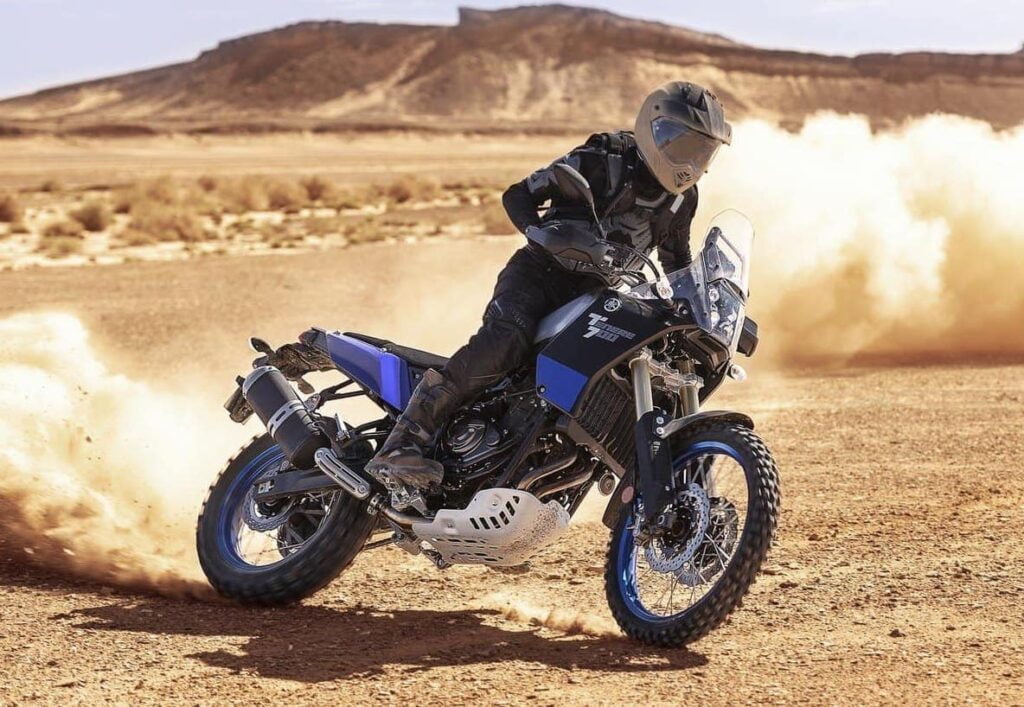
The Ténéré was released in July 2019 in Europe, in December 2019 in Australia, and in July 2020 in the USA, mid-pandemic. Great timing, virus!
Here are how the specs shake out. You can’t ride a spec sheet, but it gives you an idea. So, enjoy!
- Engine: 689cc 2-cylinder (270-degree crank)
- Power: 54 kW (72 bhp) @ 9,000 rpm
- Torque: 68 Nm (50 lb.ft) @ 6,500 rpm
- Wet weight: 205 kg (452 lbs)
- Front suspension travel: 210 mm (8.3 inches)
- Electronics: ABS, with rear switchable. No traction control available.
- Efficiency/range: 56 MPG (4.2 L/100k), 215 miles (346 km)
- Pricing: US$10,999 (Cycle World’s estimate), €9,299, £8,399, A$15,499
A few things the Ténéré doesn’t have that other (usually larger) adventure motorcycles have:
- Cruise control
- An IMU for lean angle-sensitive ABS and traction control
Reviews of the Yamaha Ténéré are generally ebullient. People can’t wait to get their hands on them. And that’s exactly why I’m writing this guide: because there are other alternatives to the Ténéré you can get your hands on right now.
People who change over from a bigger KTM or Africa Twin are happy after many thousands of kilometres.
The only complaint, if any, is that Yamaha didn’t go far enough in making it light. Some people wanted it to be as light as a dirt bike.
The motor in the T7 is the same one that’s used in the MT-07 and the XSR-700. That means it’s a lumpy parallel twin with a beautiful note and torque all through the rev range. People LOVE those motorcycles, and you can just look on YouTube to hear the sound (and see people wheelie-ing them). Wheelie on the Yamaha FZ-07, using the same engine as the Yamaha Ténéré 700
Yamaha claims its 689cc parallel twin is the most reliable motorcycle engine on the market. Bold claim, but if even directionally true, it’s promising.
I’ve had the opportunity to ride the Ténéré 700 and I did enjoy it. But if you’re considering the alternatives — or just think it’s too expensive — let’s see what else we can get.
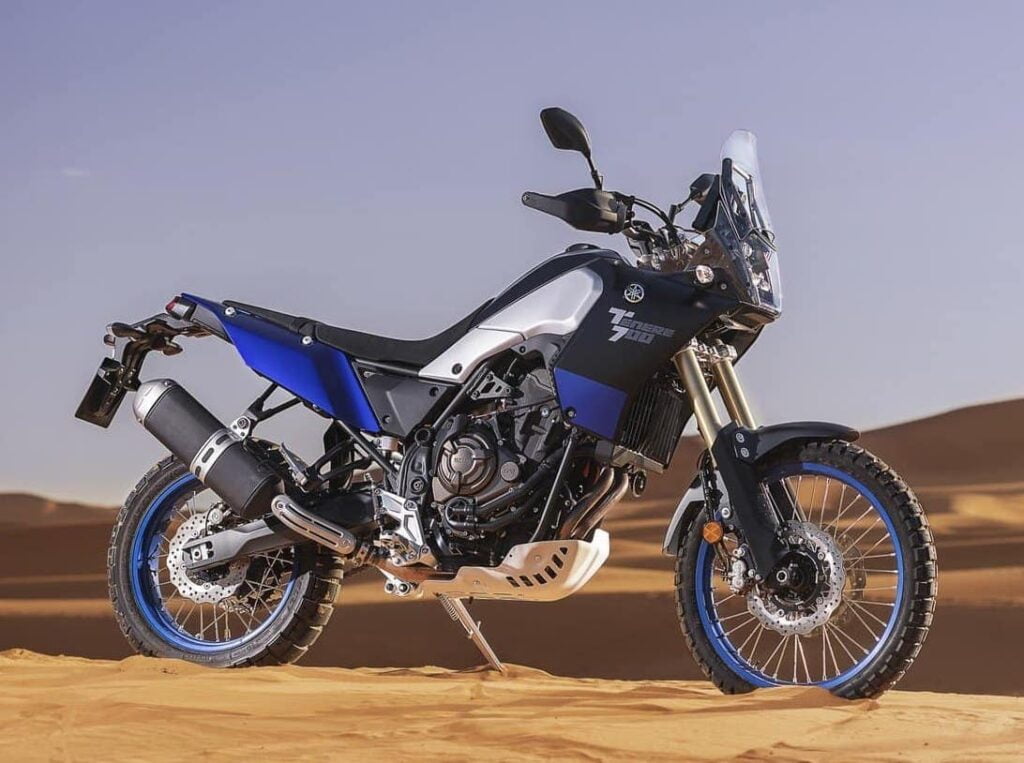
Yamama Ténéré 700 Alternative #1: The KTM 790 Adventure
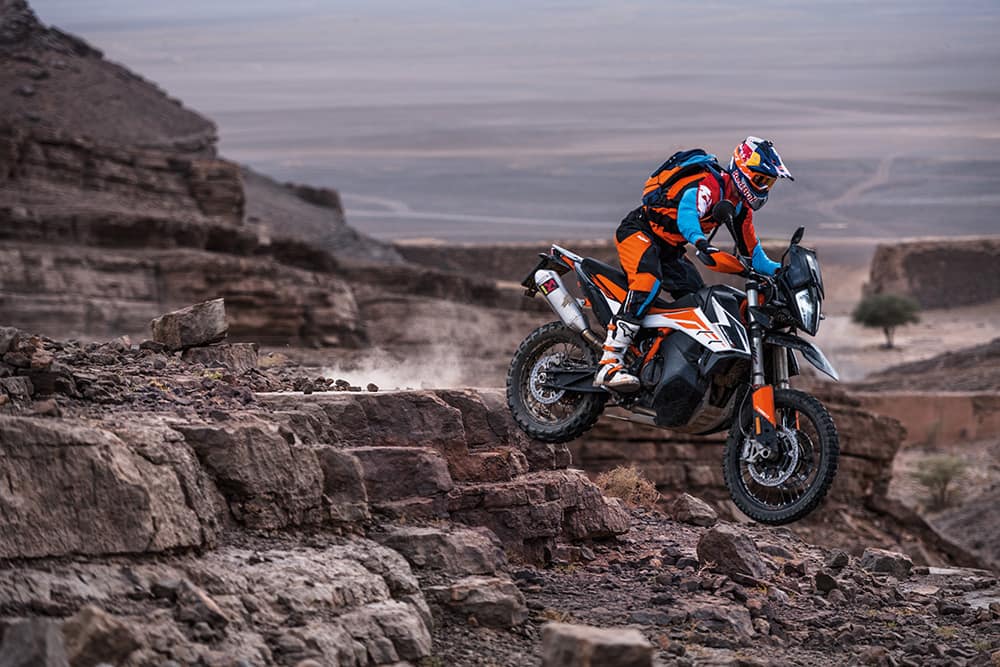
The KTM 790 Adventure was another new motorcycle model for 2019. (It got another bump to become the 890 adventure in 2020, but the 790 is a closer comparison to the Yamaha T7.)
Overall the KTM 790 Adventure is both lighter and more powerful than the Ténéré.
- Engine: 799cc parallel-twin, 75-degree separation (similar to KTM’s v-twin engines)
- Power: 70kW (95 bhp) — 30% more than the Ténéré
- Torque: 88 Nm (66 lb.ft) @ 6,500 rpm
- Wet weight: 204 kg (pretty much on par with the 205kg of the Yamaha)
- Front suspension travel: 7.9 inch (fine)
- Electronics: Cornering ABS and full traction control with ride modes — way more advanced than the Yamaha
- Efficiency/range: 52 mpg (4.5 l/100 km), 280-mile (450 km) range
- Pricing: US$12,499, €12,699, £11,099, A$21,195 (prices ~25% higher).
| Pros of the KTM 790 Adventure vs the Ténéré 700 | Cons of the KTM 790 Adventure vs the Ténéré 700 |
| * A lot more powerful (about 30%) and more torquey * KTM off-road cred, higher re-sale * Massive range * Cruise control (option), cornering ABS, traction control, ride modes * Full-colour TFT display * Same weight for a lot more stuff | * More expensive to buy and own * The Sword of Damocles of KTM reliability hangs over your head |
The KTM 790 Adventure (base model, not the higher model “R” spec) is more expensive than the Ténéré is likely to be. Everywhere but the US, the KTM model is about 25% more expensive, so we’d expect the same in the US.
That said… you get more than 25% more power, plus much better electronics (ride modes), and the same weight. So a lot of people will just say it’s worth it.
There aren’t really any unhappy owners of KTM 790 Adventures out there. Just people happy riding!
Even though the parallel-twin engine is a first from KTM, they’re no newbies to adventure motorcycle building. To make sure that the new motor would stand up to endurance sports, they ran a whole bank of engines for a collective 320,000 miles during R&D, just to make sure they were reliable enough, and to anticipate what would fail.
A word on reliability of KTMs: Ask any group of owners about reliability of a brand and you’ll get three camps, 1. those complaining about failures who’ve left a brand, 2. those who’ve still got the brand, despite failures, but love the bikes too much to leave, and 3. those who’ve never experienced issues and think it’s reviewers making up a bunch of noise. It’s very hard to distill fact from this. All I can say is that KTMs have a reputation for being a) less reliable and b) more fun than their Japanese counterparts. There’s no publicly available data on reliability, just hearsay. So it’s up to you to make your own reality (or do more research).
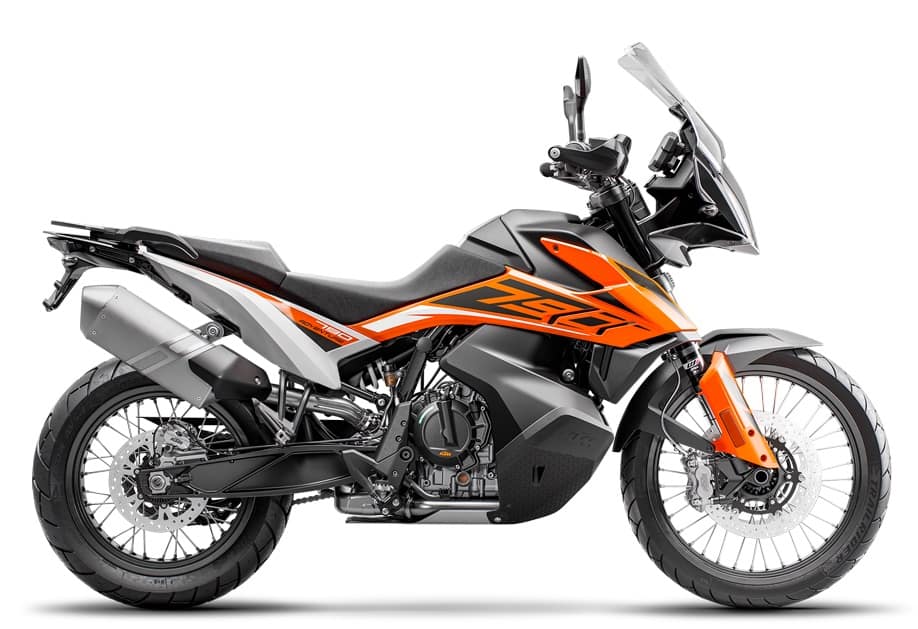
Yamama Ténéré 700 Alternative #2: The BMW F850GS Adventure
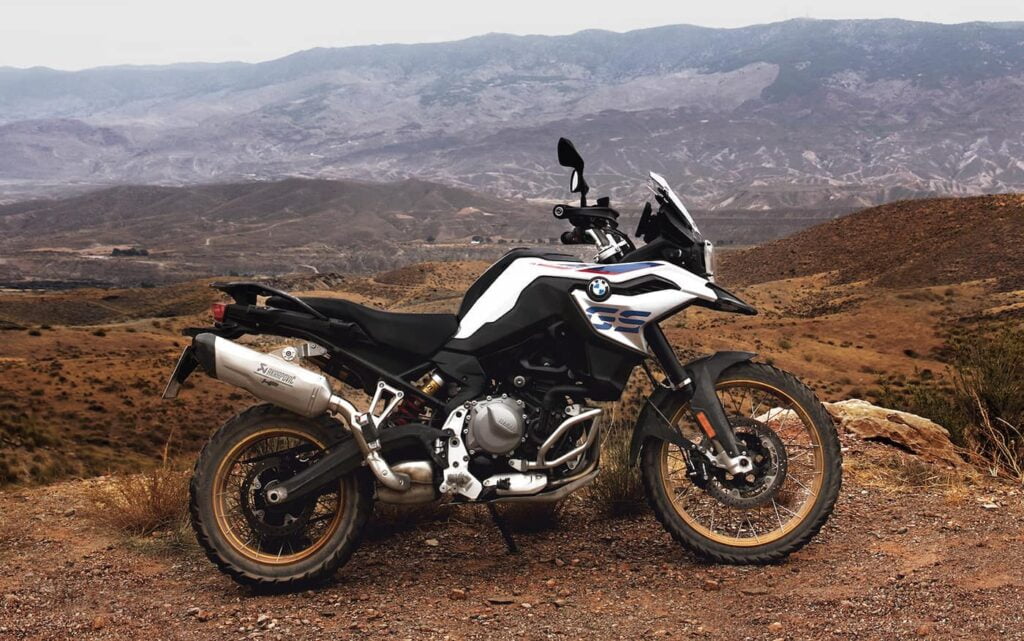
First, the specs, so you can ride that spec sheet:
- Engine: 853cc parallel-twin 270-degree crank
- Power: 70 kW (90 bhp) @ 8,250 rpm (about 20% more)
- Torque: 92 Nm (63 ft-lbs) @ 6,250 rpm)
- Wet weight: 228 kg (504 lbs)
- Front suspension travel: 203mm (8 inches)
- Electronics: Cornering ABS, traction control, ride modes
- Efficiency/range: 57 MPG, 228 miles (very similar)
- Pricing: US$14,295 (Cycle World’s estimate), €11,700, £10,600, A$15,499
| Pros of the BMW F850GS vs the Ténéré 700 | Cons of the BMW F850GS vs the Ténéré 700 |
| * More powerful (about 20%) and more torquey * BMW brand prestige, higher re-sale * Longer range * Cruise control, cornering ABS, traction control, ride modes * Full-colour TFT display | * More expensive to buy and own * Heavier (10% heavier) * Slightly less suspension travel |
BMW are the grandfathers of adventure motorcycling (well, Honda kind of created the appetizer with the Dakar, but BMW is the one that made the meal out of it). The BMW F850GS isn’t the R1250GS or renowned R1200GS, but in many ways, it’s better — people seem to really enjoy downsizing to the F850GS and actually getting more out of their motorcycle.
The F850GS (and the earlier F800GS) are the middleweight alternatives to bigger adventure motorcycles. They’re very capable, with huge 200mm of travel on the suspension, a huge amount of rider aids and electronics, and anything else you’ll need for very long rides.
The worst thing I’ve ever heard about the BMW adventure motorcycles is that they make adventure “boring”. They can do anything. Rain, mud, potholes… they just cut through it all like butter. This is a weird criticism, though. If you want to make it harder, go touring on a Honda Grom!
The main downsides to the BMW are:
- It’s expensive. Even in its base form, it’s about 25% more expensive than the Ténéré is expected to be. And you’ll probably pile on the accessories…
- Maintenance is expensive, too. You can take a BMW to any mechanic, but people buying them second-hand generally want to see that you serviced your BMW at an official dealer.
The upside is that you can buy a used F800GS from even a decade ago, and get a great bargain. You’ll easily find a well-maintained motorcycle with a ton of options like ABS, heated grips, and luggage, and pay maybe US$5-7K for it. They hold their value, but that’s still less than half the price of a new one with the same options.
And yes, if you buy yours new, it’ll hold its value reasonably well, too.
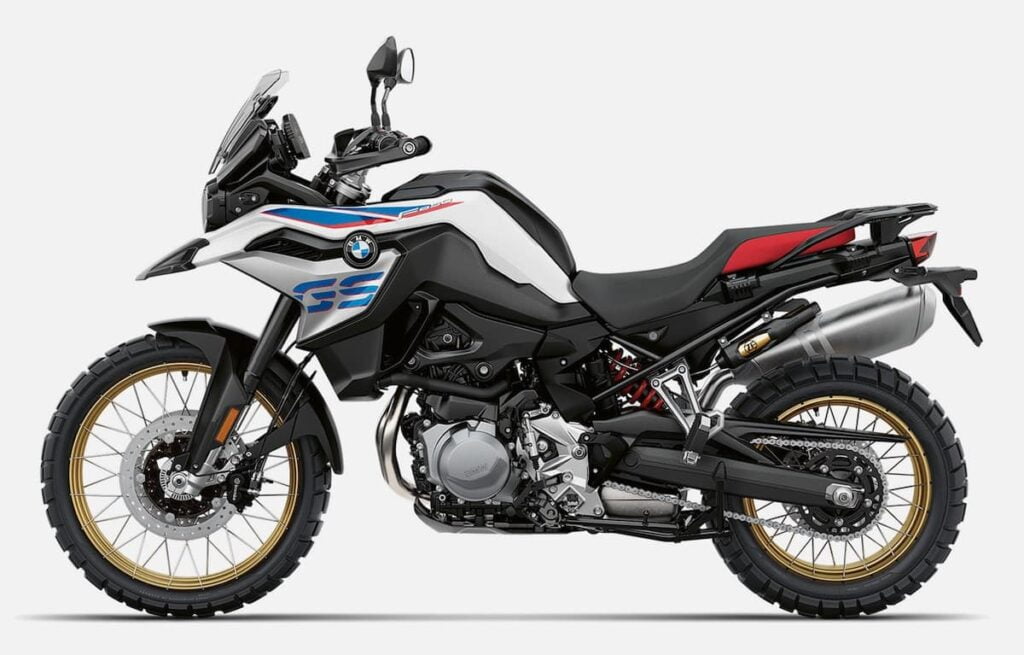
Yamaha Ténéré 700 Alternative #3: The Triumph 800 XCx
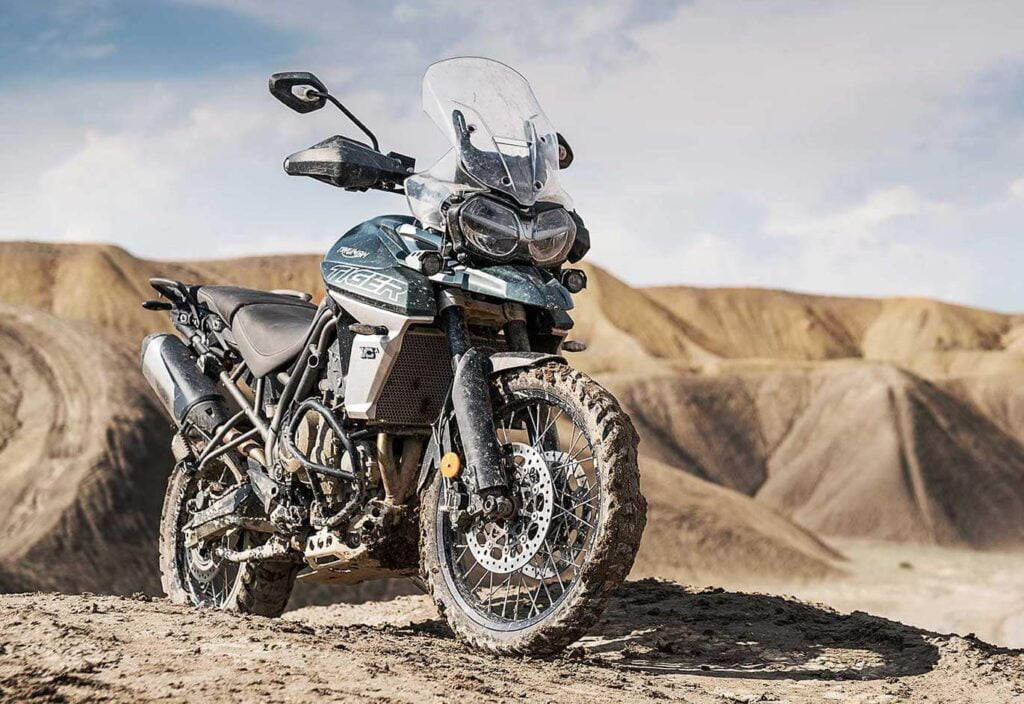
The Triumph Tiger 800 XCx is (update for 2021 — was!) the latest incarnation of the Tiger middleweight Adventure series. And it’s the best! As of 2020, the Tiger 900 range has been released — but again, the 800 range was closer in spec to the Ténéré 700.
In 2021, Triumph is delivering the Triumph Tiger 900 range. But I’m keeping the comparison with the 800 XCx as it’s closer in displacement (and prices will be more comparable in the used market, too).
First, the specs for the Triumph Tiger 800 XCx…
- Engine: 800cc inline triple
- Power: 70 kW (94 bhp) @ 9,250 rpm (about 20% more)
- Torque: 79 Nm (58 ft-lbs) @ 7,850 rpm)
- Wet weight: 220kg wet (approx.)
- Front suspension travel: 220mm (8.7 in) travel
- Electronics: ABS, traction control, ride modes in XCx model
- Efficiency/range: 50 MPG, 250 miles (huge increase)
- Pricing: US$14,600, €15,900, £9,200, A$22,500
| Pros of the Triumph Tiger 800 XCx vs the Ténéré 700 | Cons of the Triumph Tiger 800 XCx vs the Ténéré 700 |
| * More powerful (about 20%) and more torquey * Ride modes * Longer range * Cruise control * Full-colour TFT display * Triple engine, a bit smoother & revvier | * More expensive to buy and own * Heavier (7% heavier) * Less suspension travel |
The Triumph Tiger has been made for a long time, but it used to be more road-oriented, like an early Ducati Multistrada. Later models, like the XCx, have all the things you need for going off-road: engine protection, handguards, and big, wire-spoked wheels. This is definitely one of the “premium” adventure tourers, like the BMW.
The result is that a Tiger is a great compromise between both worlds. You can load it up with luggage and go riding with another person on the back, or you can use it to just pop down to the shops and get groceries.
Like the BMW, they can come with every option in the menu if you want them: cruise control, heated grips, and a comfort seat. If you buy them second hand, you can effectively get a discount on a lot of these things.
But one of my favourite features of Triumph Triples is dat engine sound. Oh my. It is LOUD. It howls. With a good set of pipes on it (always used! I find it so hard to drop $1K+ on new exhaust systems) the Tiger Triple sounds as good as a Speed Triple.
Yes, off-road it’s still a pretty big machine and will require heft to get it to do what you want.
Like with the BMW, the major downsides of owning a Triumph are factory service and the expectation by future buyers that you’ll have done factory service. Dismantling an adventure motorcycle even to do things like change an air filter is a huge pain in the ass (and one of the reasons I prefer naked motorcycles, generally).
For this reason, I’d suggest you buy a used one, so someone else has done all the service for you.
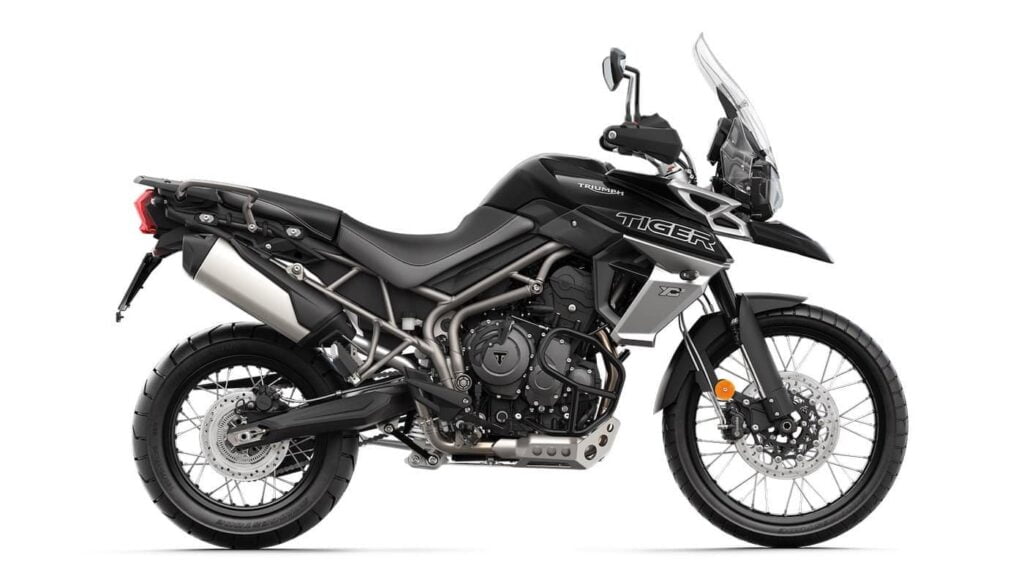
Yamaha Ténéré 700 Alternative #4: The Suzuki V-Strom 650 XT
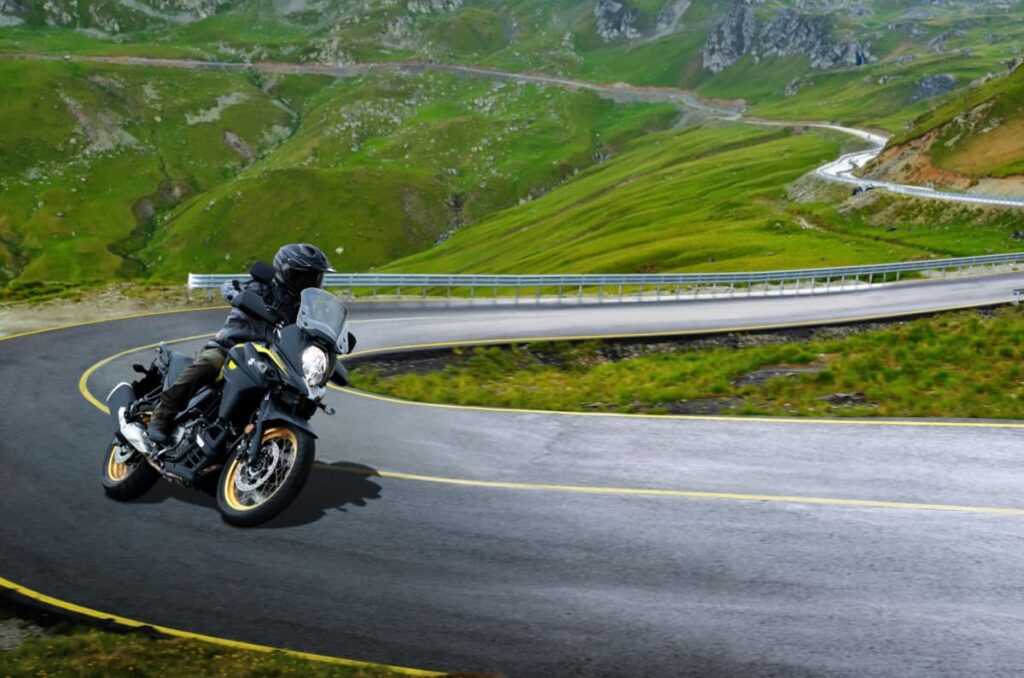
First, the specs for the V-Strom 650XT, so you can compare them with the Yamaha Ténéré 700:
- Engine: 645cc 90-degree V-twin
- Power: 49 kW (67 hp) @ 8,800 rpm — 10% down on power
- Torque: 60 Nm (44 lb-t) @ 6,400 rpm
- Wet weight: 216kg — about 10 kg heavier
- Front suspension travel: 150mm (5.9 in) (not very long)
- Electronics: ABS, Traction control, Low RPM assist, built-in ride modes (much better equipped!
- Efficiency/range: 20 L (5.2 gal) tank, 430 km (270-mile) range
- Pricing: US$9,299, €9,600, AU$12,490 (much cheaper)
| Pros of the V-Strom 650XT Ténéré 700 | Cons of the V-Strom 650XT vs the Ténéré 700 |
| * Cheaper (about 20%) * Better road manners (more comfortable seat, taller screen) * More customisable (has been around longer) * Bigger community | * Less powerful (10% less power) * Heavier (5% heavier) * Less suspension travel |
The Suzuki V-Strom 650 XT, or the “Wee-Strom” as it’s affectionately known by its rabidly loyal community, is a smaller V-Strom with minimum adventure gear fitted: a tall front screen, an engine guard, and hand shields.
But that’s not all. The V-Strom is fitted with many things larger motorcycles only have as options. It comes standard with ABS, rider modes and traction control.
The Wee-Strom is known as being one of the most comfortable motorcycles to ride long range. They’re a favourite for doing things like the “Iron Butt Challenge”. And since they go over 430 kms (268 miles) on one tank, they are real favourites for the “Iron Butt Challenge” of going 1000 miles in one day.
On top of that, the V-Strom is affordable. It’s easily the cheapest of the adventure motorcycles, coming in at US$9,299, 20% cheaper than the anticipated price of the Ténéré 700.
The downsides are that the suspension travel isn’t as long, the engine is 10% down on power, and it’s 5% heavier. So it’s a slightly more muted experience than the Ténéré 700 promises to be.
Generally, people say that the V-Strom 650XT isn’t as suited for off-road. While neither the V-Strom nor the T7 are dirt bikes, people seem to be more comfortable with the T7 off-road.
Then again, I’ve seen the V-Strom 650 (not even the XT) in random back roads in Africa. It can do a lot. If you can reasonably foresee the kind of riding you might be doing, the V-Strom 650 might be more suitable.
The V-Strom is also the more comfortable motorcycle. It has a comfortable seat, and taller screen. And on top of that, there are more options for the Wee-Strom, like really tall screens and plush seats. You can make it as comfortable as an armchair.
But there’s another upside: the V-Strom has been around for a very long time. You can definitely pick one up used for just a few thousand dollars or less for one with many miles on it. I’ve seen them go for $2K from dealers — with 100+K miles.
Still, this is the budget entry into middleweight adventuring, and the V-Strom 650XT is the ultimate budget adventure motorcycle for a LOT of people.
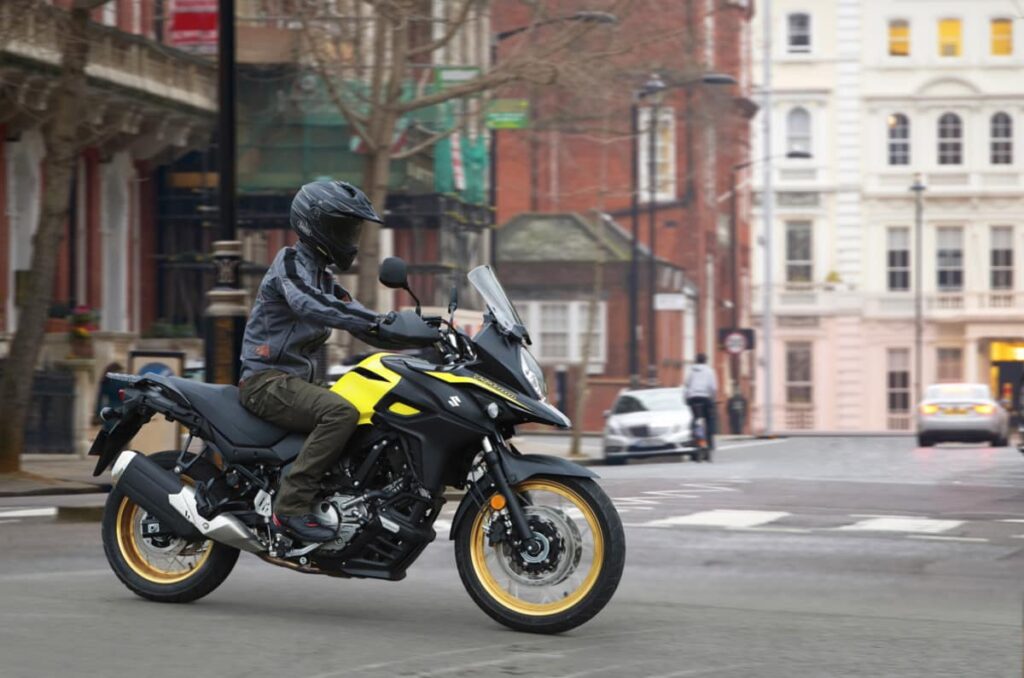

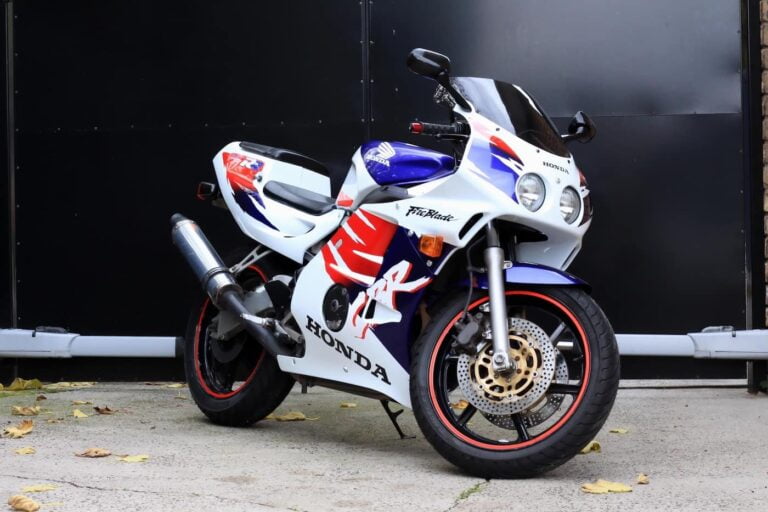
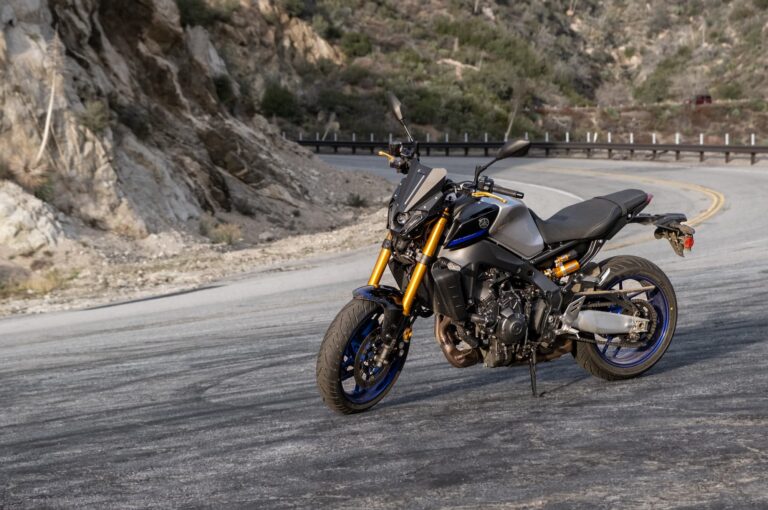
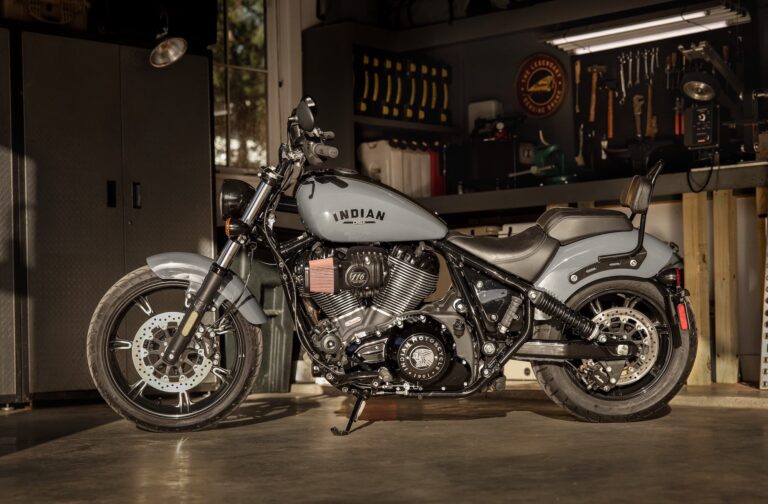
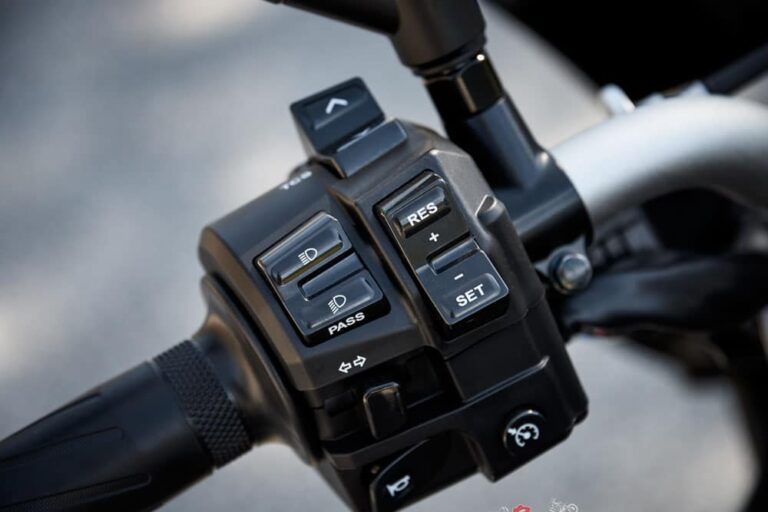
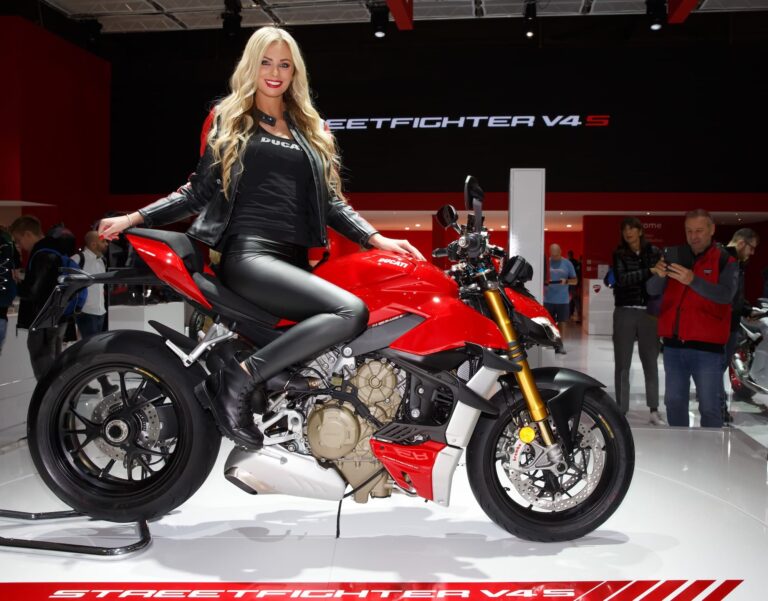
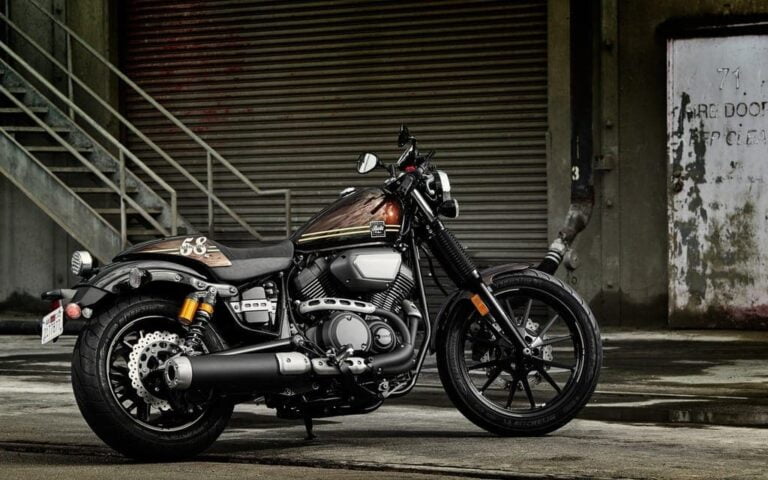
I already have many motorcycles and my next one will be V Strom .I am not sure 650 or 1050
They are very well built Motorcycles.
I think that Ducati desert sled, with a windshield, is a good alternative.